Remember when online shopping just meant browsing Amazon? Well, 2025’s shopping trends paint a different picture. These days, we’re just as likely to buy something we spotted on TikTok as we are to find it through a Google search.
But here’s what’s interesting about shopping trends in 2025: while we’re finding new ways to discover products, some things stay surprisingly constant.
From social media’s growing influence to our never-ending hunt for good deals, let’s look at the five biggest trends shaping how we shop online this year.
Social Media Drives Purchase Decisions
Social media platforms have distinct impacts on different age groups’ shopping habits. The data shows clear patterns in how each generation prefers to discover and buy products, with significant variations in platform preferences and purchasing behaviors.
Where Different Generations Shop
Different age groups show distinct preferences in where they discover and buy products:
Gen Z’s preferred shopping platforms:
- Instagram: 53%
- TikTok: 41%
- YouTube: 88% engagement rate
- Instagram: 52%
- Facebook: 49%
- 55% of Gen Z buys from brands their social media influencers follow
- 39% of female Gen Z consumers purchase products after seeing them on TikTok
- Nearly half of Gen Z shows higher interest in products endorsed by their favorite podcasters
- 42% of UK shoppers start on search engines
- 57% of Gen Z discovers new brands through YouTube
- 51% of online shoppers begin their product searches on Amazon
- 55% of Gen Z responds positively to brands sharing behind-the-scenes content
- 56% believes companies often misrepresent their products
- 46% won’t make purchases without finding independent product information
- 48% of online shoppers abandon carts due to unexpected fees
- 47% leave due to high shipping costs
- 41% of global shoppers cite high delivery fees as their reason for abandonment
- 50% of shoppers compare prices on Amazon before buying elsewhere
- 60% look for secondhand options before considering new items
- 90% of shoppers compare prices across different platforms
- 80% of US users choose Amazon specifically for its fast, free shipping
- Amazon Prime maintains a 99% two-year renewal rate in the US
- 90% of Prime members use Amazon primarily for its free shipping benefit
- 70% of Gen Z prefers buying from companies they consider ethical
- 66% of US Gen Z considers a brand’s sustainability efforts when making purchases
- Nearly one-third of Gen Z feels financially insecure, driving more careful spending habits
- 77% of mobile device orders remain uncompleted in the UK
- Mobile phones account for 77% of global online retail traffic
- Desktop users maintain a 70% cart completion rate compared to mobile
- 50% of Amazon shoppers complete their purchases in under 15 minutes
- 50% finalize their purchases in less than 15 minutes
- Cart abandonment rates increase significantly for longer checkout processes (22% leave due to lengthy checkouts)
- 25% abandon when required to create an account
- 13% leave due to insufficient payment methods
- 17% exit due to website errors
- 22% abandon due to complicated checkout processes
- 69% of UK consumers use smartphones for online purchases
- 73% of US shoppers prefer mobile for ecommerce
- Desktop PCs are used by 25% of US shoppers for online buying
- 46% won’t buy products without finding independent reviews
- 51% of females and 39% of males find customer reviews very helpful
- 41% consistently read product reviews before purchasing on Amazon
- 19% of potential buyers avoid purchases due to credit card security concerns
- 56% of Gen Z believe brands often misrepresent their products
- 45% are more likely to engage with brands that demonstrate transparency
- 16% of consumers abandon carts due to unsatisfactory return policies
- 90% of Gen Z prefers buying from socially responsible brands
- Poor return policies affect luxury and high-value purchases more significantly
- British consumers show particular sensitivity to return policy terms
- More than 60% of British residents expect next-day delivery options
- Luxury retailers see higher conversion rates when offering premium delivery services
- UK online spending rose to £24.4 billion during Christmas period, with fast delivery being a key driver
- The UK Christmas period saw a 3.7% increase year-over-year in regions with next-day delivery options
- Click-and-collect retailers in Europe report 15% higher customer retention
- Alternative delivery points increase purchase completion rates
- Fulfillment by Amazon reduces shipping costs by 70% per unit, allowing retailers to offer more delivery options
- European cross-border ecommerce grows faster in regions with diverse delivery choices
- Cross-border shipping accounts for 12% of UK’s total ecommerce
- International shipping sales reached $35.9B in Q3 2024
- Turkey leads ecommerce development with an 11.6% growth rate due to improved international shipping
- British consumers show higher adoption rates of international purchases when flexible delivery is available
Bonus: For more Gen Z statistics on shopping trends, visit our detailed stats page!
Millennials’ shopping preferences:
The Power of Influencer Marketing
Social proof and expert recommendations significantly shape buying decisions, especially among younger shoppers.
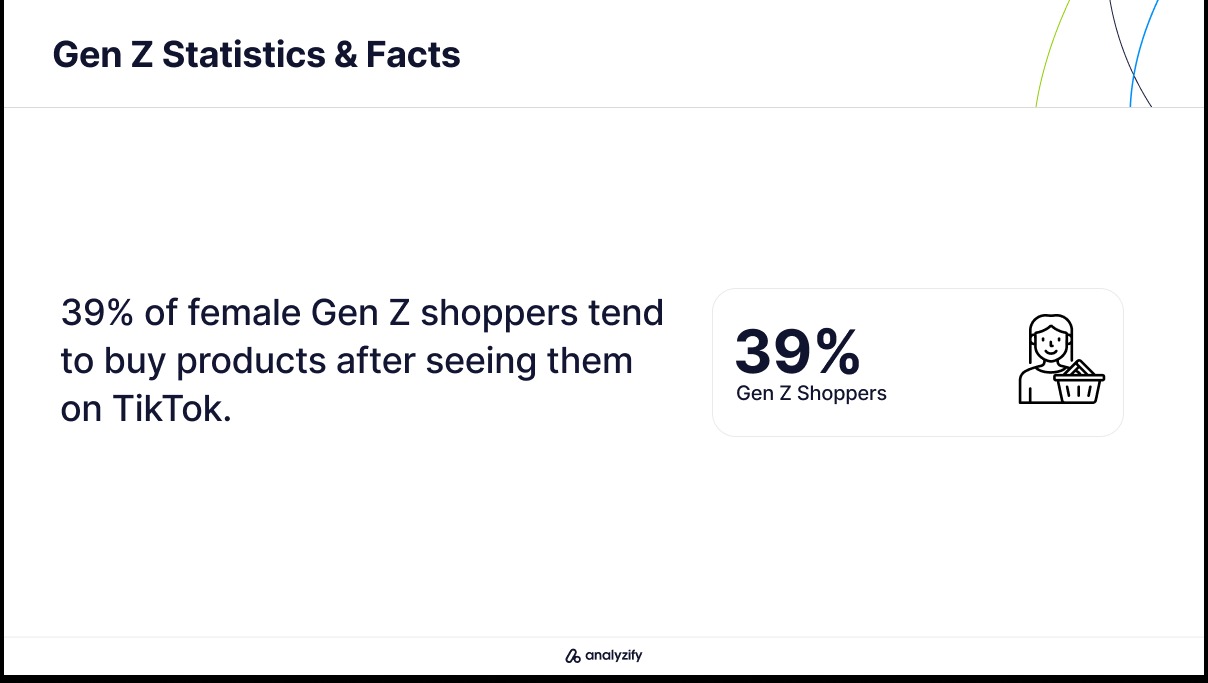
Key findings on Gen Z shopping trends show:
How People Start Their Shopping Journey
Before making a purchase, consumers follow specific patterns in researching products and comparing options.
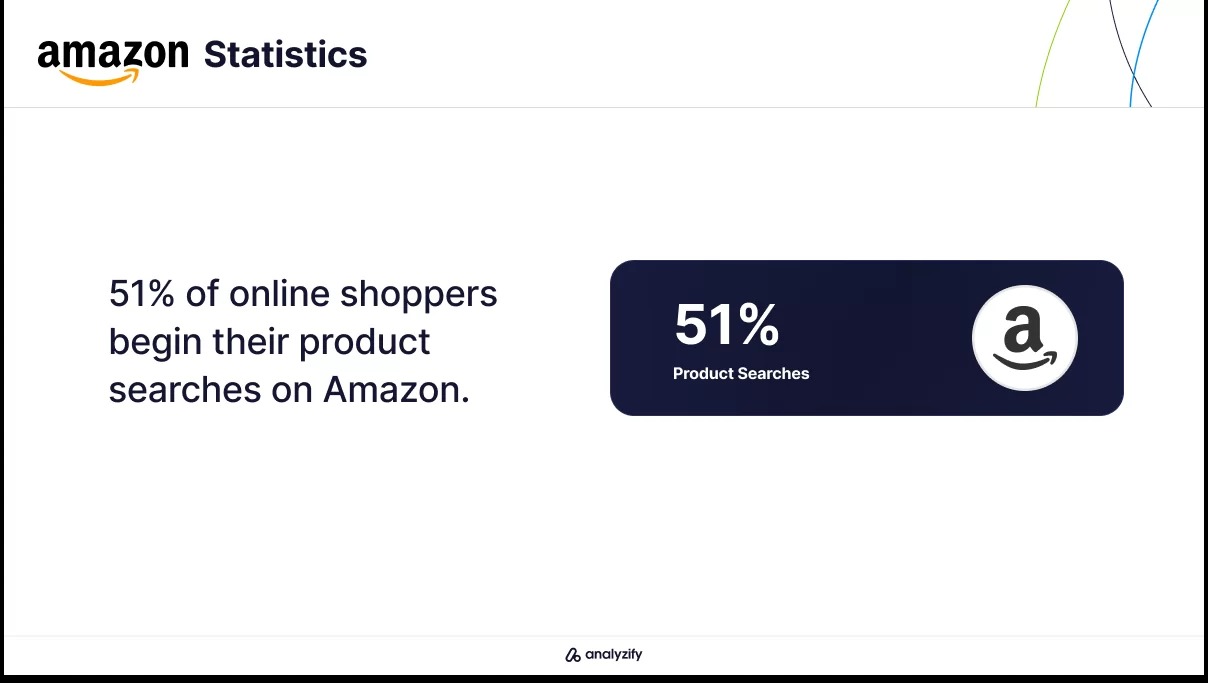
Search patterns vary by platform and region:
Trust and Transparency
Despite the growing influence of social media on shopping, consumers maintain a healthy skepticism about online product information.
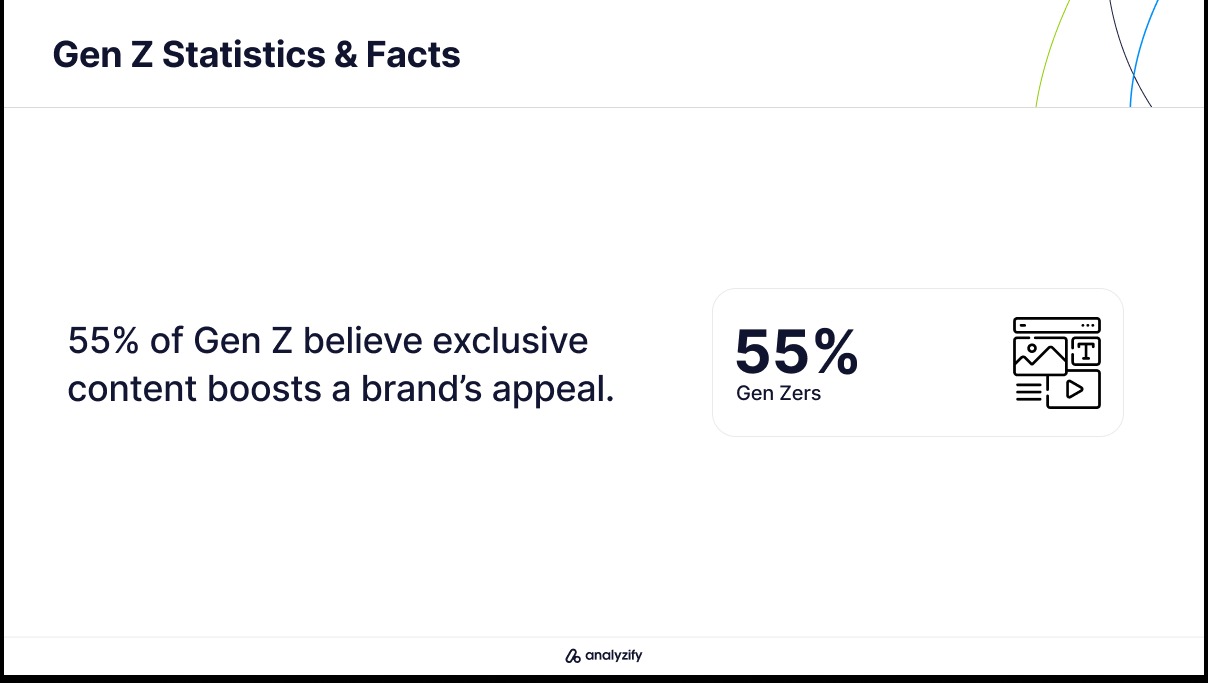 Three key shopping trends emerge:
Three key shopping trends emerge:
The financial impact of social commerce continues to grow. With projections reaching $8.5 trillion by 2030, social platforms are becoming as important as traditional online stores for making purchases.
Price Remains the Primary Decision Factor
Despite changing shopping platforms and habits, cost continues to be the main factor that determines whether shoppers complete their purchases. Both direct costs and additional fees play crucial roles in shopping cart abandonment and platform preferences.
Hidden Costs Drive Away Customers
Shopping cart abandonment data reveals how extra costs impact purchasing decisions:
Price Comparison is Standard Practice
Before making purchases, consumers actively seek the best deals:
The Amazon Price Effect
Amazon’s pricing and shipping policies have set new standards for online shopping:
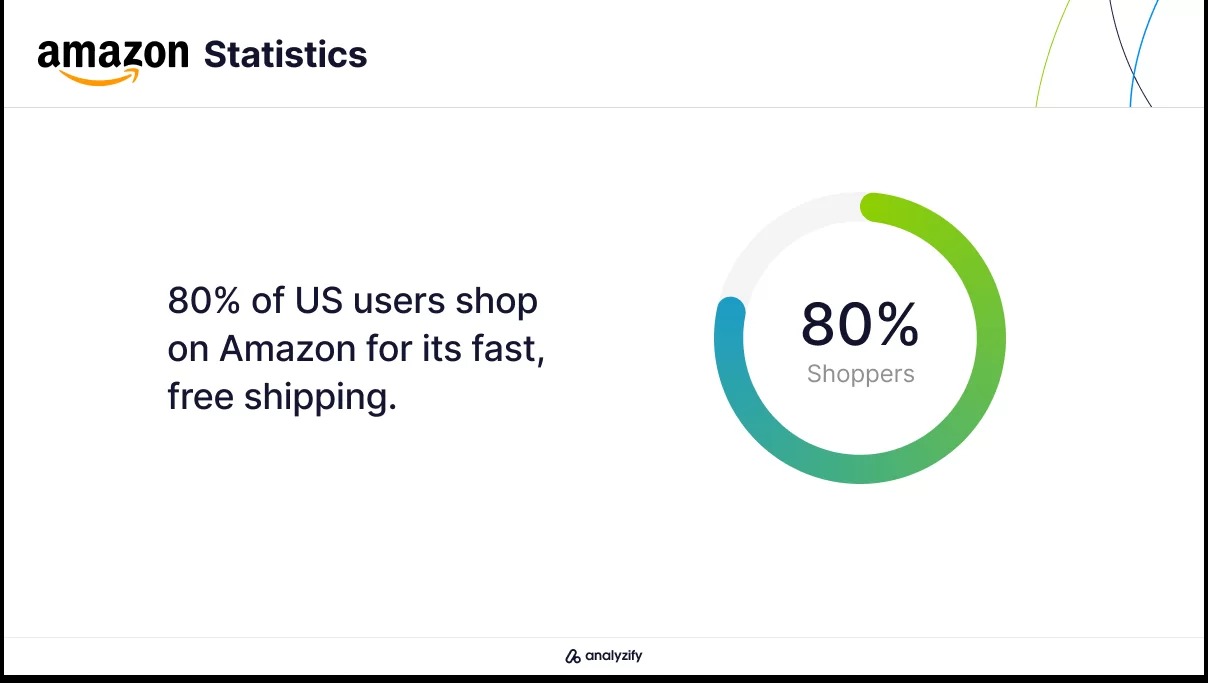
Value-Seeking Behaviors
The search for better value extends beyond just comparing prices:
Mobile Shopping Falls Short of Its Potential
While mobile devices dominate browsing activity, they significantly underperform in converting these visits to actual purchases. The gap between mobile browsing and buying reveals specific patterns in consumer behavior and highlights areas where mobile shopping experiences need improvement.
The Mobile-Desktop Divide
Mobile shopping statistics show a clear disconnect between browsing and buying. Despite the convenience of mobile devices, desktop platforms continue to show stronger conversion rates.

Key findings on shopping trends show:
The stark contrast between mobile browsing and purchasing suggests that while consumers prefer mobile for product discovery, they often switch to desktops for completing transactions.
Speed of Purchase Decisions
Data shows distinct patterns in how quickly consumers make purchasing choices. The speed of checkout plays a crucial role in whether a sale is completed or abandoned.

These statistics emphasize that faster checkout processes directly correlate with higher conversion rates, especially on mobile devices where user patience tends to be lower.
Why Mobile Users Don’t Complete Purchases
Several factors contribute to mobile shopping abandonment, with user experience issues being the primary concern. Technical and design limitations continue to frustrate mobile shoppers:
The combination of these factors suggests that simplifying mobile checkout processes could significantly improve conversion rates.
Device Preferences by Region
Shopping device preferences vary significantly by market, reflecting different cultural and technological adoption patterns:
These regional differences highlight the importance of understanding local market preferences when designing shopping experiences.
Trust Makes or Breaks Online Sales
The relationship between trust and purchase decisions becomes clearer when examining shopping behavior data. From review dependencies to security concerns, specific patterns emerge that show how trust influences buying decisions.
The Critical Role of Reviews
Consumer review behavior shows that shoppers heavily rely on others’ experiences before making purchases. This verification process has become a standard part of the online shopping journey.

Key findings on shopping trends show:
Product reviews serve as a form of social proof, with their impact being particularly strong in certain shopping categories.
Security Concerns Shape Buying Patterns
Security concerns continue to influence where and how people shop online. Data shows that shoppers are increasingly cautious about where they input their payment information:
Return Policies Impact Purchase Decisions
Return policies play a crucial role in building trust and encouraging purchases.
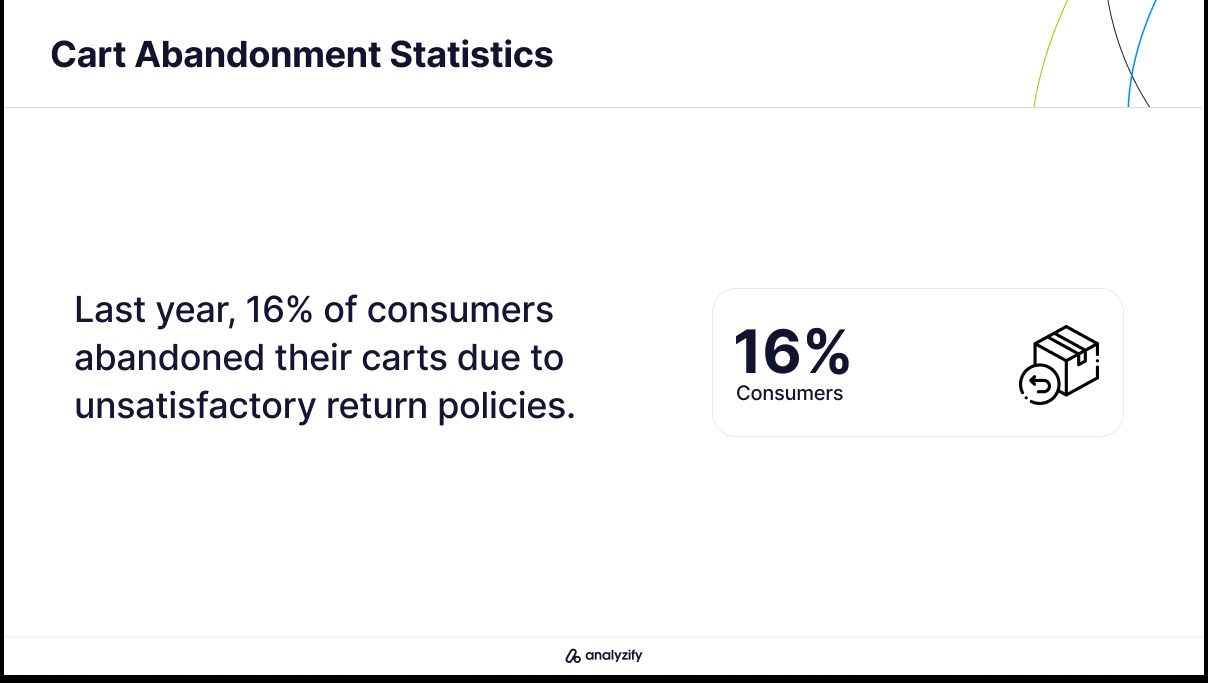
The data reveals that unclear or unsatisfactory return policies directly affect sales:
These findings indicate that clear, customer-friendly return policies can significantly boost sales and customer confidence.
Delivery Options Shape Purchase Decisions
The relationship between delivery options and purchase completion rates shows that consumers now consider delivery service quality as important as the product itself.
Next-Day Delivery Becomes the New Standard
The data shows consumers now expect faster delivery as a basic service, not a premium option. This shift has forced retailers to rethink their delivery infrastructure and pricing strategies.
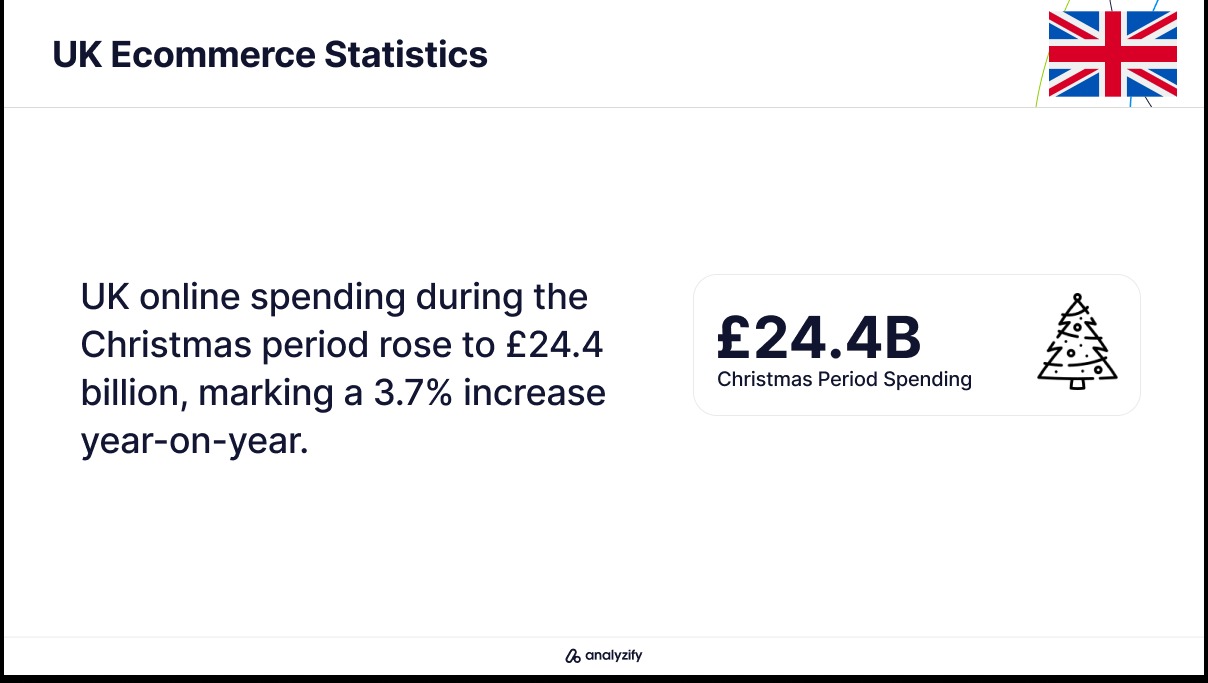
Key findings on online shopping trends show
This trend is particularly noticeable in luxury and time-sensitive purchases, where the speed of delivery often determines whether a sale is completed or abandoned.
Flexible Delivery Options Boost Sales
Retailers offering multiple delivery choices see better customer engagement. The ability to choose between different delivery methods has become a significant factor in where consumers decide to shop.
These statistics suggest that retailers who invest in flexible delivery infrastructure gain a significant competitive advantage. The reduced shipping costs often translate into higher profit margins, despite the initial investment in delivery infrastructure.
International Shipping Reshapes Market Boundaries
Cross-border delivery capabilities are expanding market reach, creating new opportunities for both retailers and consumers. The growth in international shipping reflects increasing consumer confidence in buying from overseas retailers.,
The success of cross-border ecommerce largely depends on reliable delivery services. Markets that have invested in robust international shipping infrastructure show significantly higher growth rates in online retail.
How to Keep Up with Online Shopping Trends in 2025: A Guide for Sellers
Online shopping trends in 2025 show a clear message: customers want simplicity, transparency, and value. But how do you actually deliver this as a seller? Looking at the data, we can pinpoint what specifically drives sales.
a) Build Trust Through Transparency
Trust matters more than ever. With Amazon capturing 37.6% of the US market, smaller sellers need to work harder to build confidence. The solution? Show more than just your products. Behind-the-scenes content increases brand appeal by 55%, while clear return policies directly impact high-value purchases.
b) Fix Your Mobile Experience
Mobile shopping presents a huge opportunity - 77% of global retail traffic comes from phones. Yet conversion rates remain low. Successful sellers focus on streamlining their mobile checkout process first, knowing that 28% of purchases can happen in under 3 minutes when the experience is smooth.
c) Rethink Your Delivery Strategy
Delivery options have become a deal-breaker. While Amazon ships 1.6 million packages daily, other sellers can compete by offering flexible delivery choices. The proof? Online shops offering next-day delivery options see significantly lower cart abandonment rates.
d) Get Your Pricing Right
Your pricing strategy needs to account for comparison shopping. With up to 10,000 independent Amazon sellers hitting $1 million in sales for the first time last year, competitive pricing combined with transparent fees has become essential. Successful sellers show all costs upfront, knowing that hidden fees drive away nearly half of potential buyers.
e) Leverage Social Proof
Most importantly, social proof has become non-negotiable. With over 100 million Americans now shopping through social media, integrating social proof into your sales strategy isn’t optional - it’s essential for survival in 2025’s market.
Frequently Asked Questions About Online Shopping Trends 2025
Here are the most common questions about online shopping trends and consumer behavior in 2025:
What does Gen Z expect from brands in 2025?
Gen Z demands authenticity and transparency from brands. They’re drawn to companies that share behind-the-scenes content (55% find this appealing), support ethical practices (70% prefer ethical companies), and maintain a clear social media presence.
Beyond that, 71% are eager to try new brands, but 56% believe companies often misrepresent their products. Unlike other generations, Gen Z looks for sustainable options first and values work-life balance (77%) when choosing brands to support.
Why do most people abandon their online shopping carts?
The main reasons for cart abandonment are surprisingly consistent across markets. High shipping costs drive away 47% of shoppers, while extra fees deter 48%.
About 25% leave when forced to create an account, and 22% abandon due to complicated checkout processes. Trust also plays a big role - 19% abandon purchases due to credit card security concerns.
How are people discovering products in 2025?
Product discovery has shifted significantly. While 51% start their product searches on Amazon, social platforms now play a crucial role.
Instagram leads for Gen Z (53%) and Millennials (52%), while TikTok captures 41% of Gen Z shoppers.
YouTube engages 88% of Gen Z users, making it a key platform for product discovery. Traditional search engines still matter, with 42% of UK shoppers starting their journey there.
What makes people trust an online store?
Trust builds through several key factors. Reviews are crucial - 46% won’t buy without finding independent reviews first.
Transparent pricing matters, with 90% of shoppers comparing prices across platforms. Clear return policies are essential - 16% abandon purchases due to unsatisfactory return terms.
Website functionality also impacts trust, as 17% leave due to technical errors.
Are mobile purchases becoming more common?
While mobile browsing dominates ( 77% of global retail traffic), conversion rates tell a different story. In the UK, 77% of mobile orders remain uncompleted.
However, when the experience is smooth, purchases can happen quickly - 28% of Amazon shoppers complete purchases in under 3 minutes.
Mobile shopping success depends heavily on streamlined checkout processes and clear product information.

































